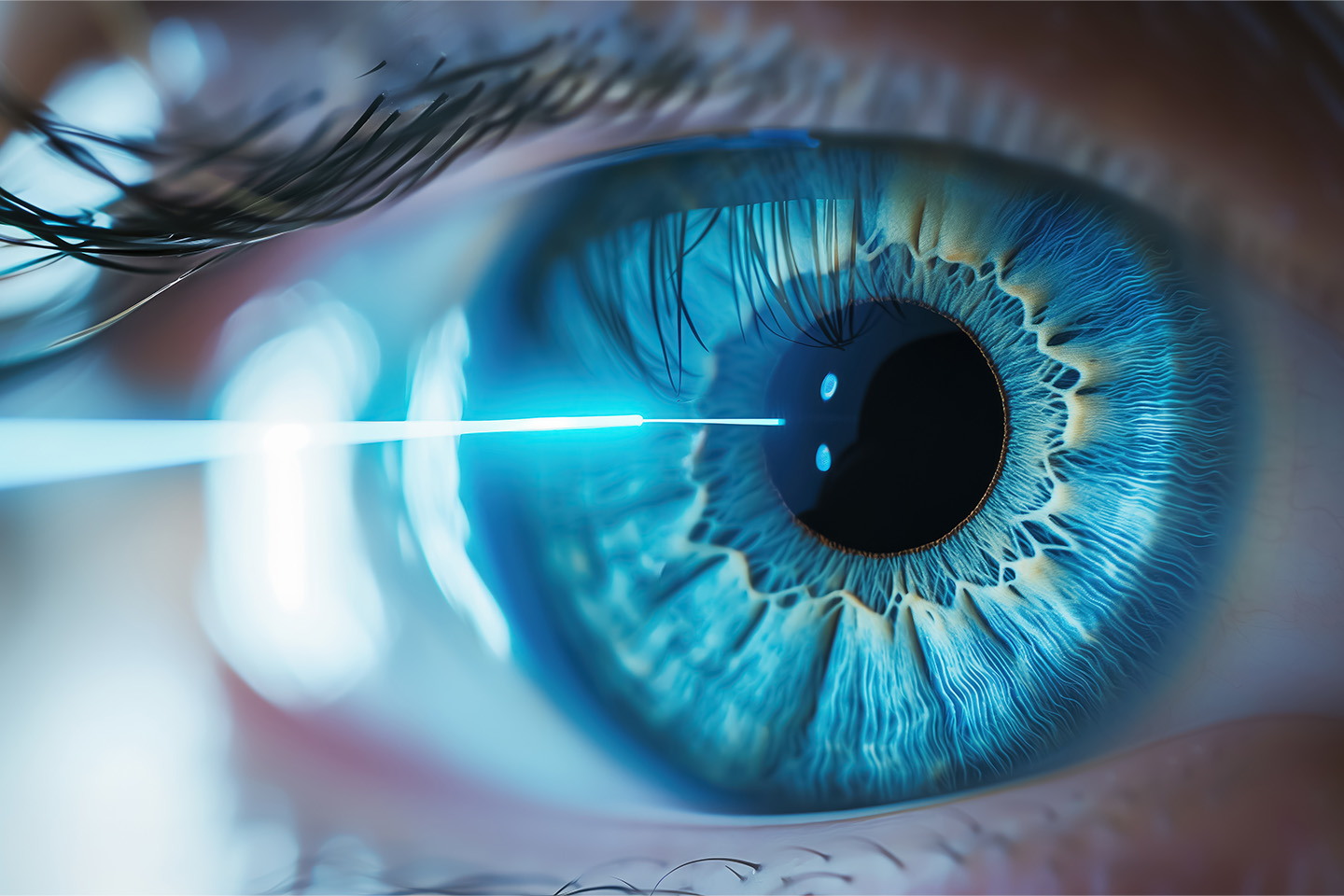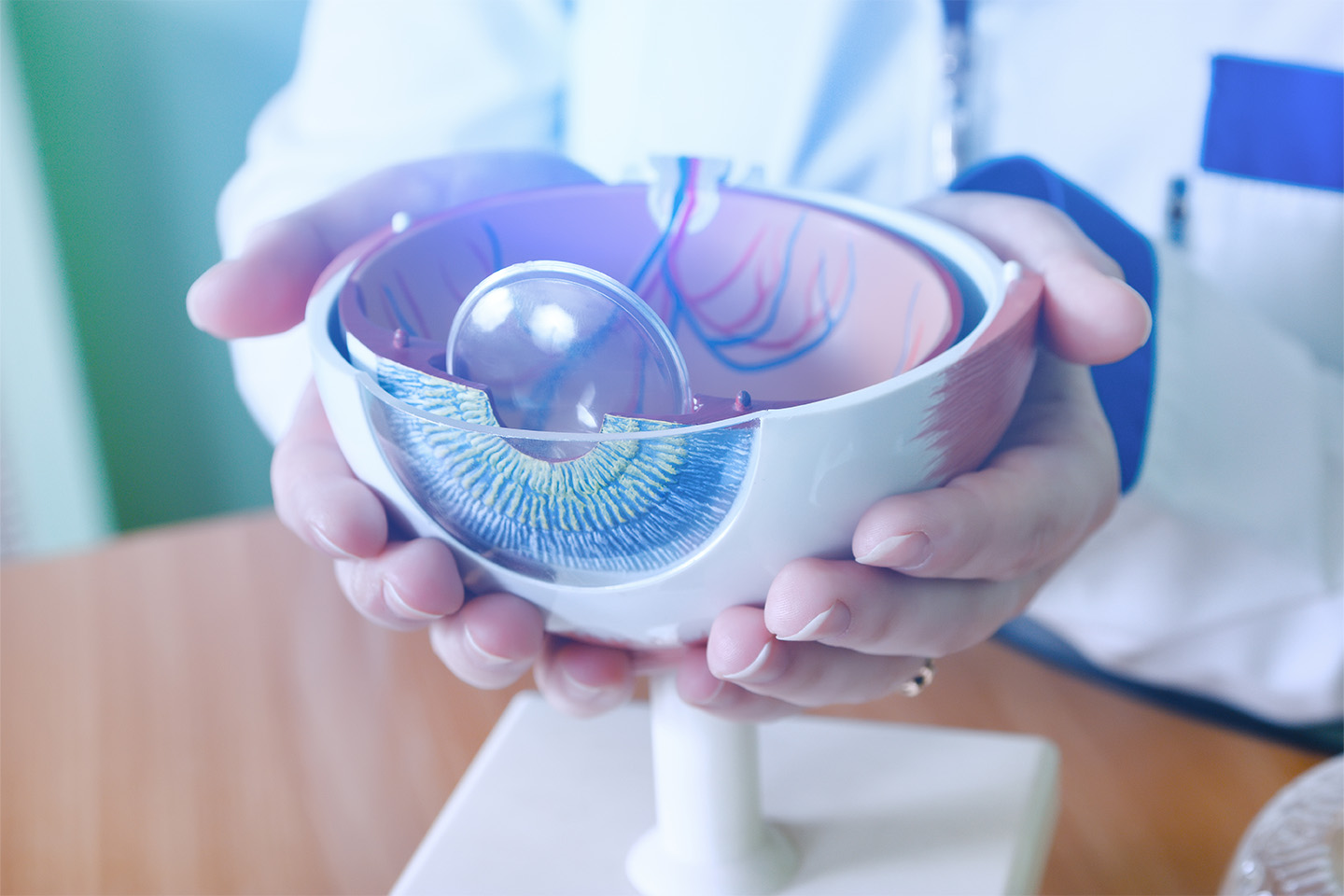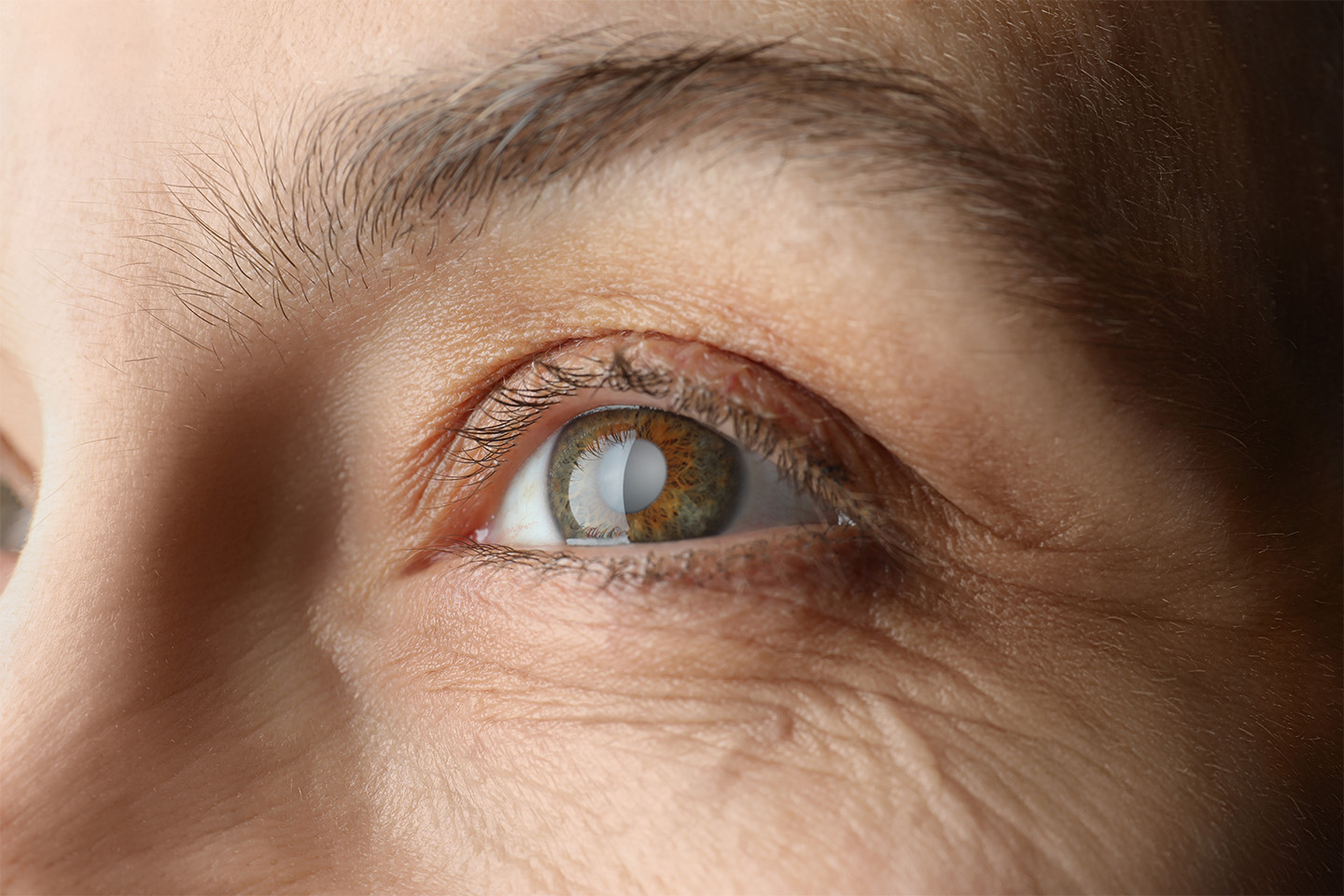Cataract Surgery After LASIK: What You Need to Know

CATARACT SURGERY AFTER LASIK: WHAT YOU NEED TO KNOW
It’s a common misconception that you cannot have cataract surgery if you’ve previously undergone LASIK surgery or a similar vision correction surgery. Cataract surgery treats the clouded natural lens of the eye, replacing it with an artificial intraocular lens to restore clear vision. This myth may be keeping qualified LASIK candidates from seeking life-altering vision correction surgery or worse, keeping cataract patients from seeking professional cataract treatment.
The truth is that prior LASIK patients can undergo successful cataract surgery. It’s important to note that people develop cataracts naturally with age, and this process is unrelated to LASIK or other procedures to correct vision. However, to increase the chances of a successful cataract procedure, it’s extremely important to tell your ophthalmologist about your LASIK history.
Why Communication is Important
LASIK and other refractive vision correction procedures (such as PRK) change the shape of your cornea to better focus your vision. This procedure, though commonplace and highly successful, will affect how your doctor treats your cataracts. Patients with previous refractive surgery require special consideration during planning cataract surgery to ensure optimal outcomes.
Having previously undergone LASIK will make the outcome of your cataract surgery less predictable than cataract surgeries in patients who have not previously had vision correction surgery. Because of this added challenge, your doctor will take extra steps during pre-operative planning to evaluate your eyes and recommend the best intraocular lens (IOL) and prescription for your individual circumstances. A thorough cataract evaluation is essential in these cases to identify any irregularities or ocular surface issues that may influence surgical planning and IOL calculations.
It’s important to remember that while determining the correct IOL prescription is complicated by a previous vision correction surgery, it is by no means a deal breaker when seeking cataract treatment and surgery. Specialized surgical techniques may also be used to optimize outcomes for patients with a history of refractive surgery.
What You Need to Tell Your Doctor
Once you tell the doctor treating your cataracts about your previous LASIK or PRK surgery, he or she will ask for additional information. To create the best cataract treatment plan possible, your doctor will ideally need:
- Pre-LASIK eye measurements
- Pre-LASIK vision correction prescription
- Post-LASIK eye measurements
- Post-LASIK vision measurement (prior to developing cataracts)
Accurate measurement of corneal power and careful assessment of the corneal surface are essential for precise IOL calculation after corneal refractive surgery such as LASIK or PRK. It is also important to evaluate and optimize the ocular surface before surgery to ensure accurate measurements and better surgical outcomes.
The pre-LASIK information will tell your doctor about your original vision and the natural curvature of your cornea. This information is important in helping your doctor determine the correct IOL prescription for your cataract lens replacement.
The Risks of Cataract Surgery After LASIK
It’s possible that the myth of LASIK patients being unable to undergo cataract surgery may stem from the additional challenges a previous LASIK surgery presents to cataract treatment. LASIK and other vision correction procedures change the shape of your cornea. This alternation makes determining the correct cataract IOL prescription more difficult — though not impossible.
Treating cataract patients who haven’t had vision correction surgery is typically straightforward. Existing formulas help doctors determine the correct IOL prescription with a high degree of accuracy. Implanting the correct IOL is key to clear vision following cataract surgery, and for many people means they don’t need corrective lenses for distance vision (though they may still need glasses for near vision).
The main risk associated with cataract surgery in LASIK patients is that the wrong IOL prescription will be calculated, resulting in blurry, unfocused vision following cataract surgery. There is also a possibility of residual refractive error, including residual myopia, which can lead to poor vision or blurred vision after surgery. Patients may also experience visual aberrations such as glare or halos. In some cases, a new LASIK procedure can correct these issues; in others, a new intraocular lens placement procedure may be needed.
Why This Happens
LASIK, PRK, and other modern vision correction procedures affect the shape and curvature of the outermost layers of your cornea, but have little to no effect on the “posterior” or back portion of the cornea. LASIK reshapes the cornea using laser-assisted technology to correct refractive errors, but does not affect the eye’s lens or cause cataract formation. The surgical procedure for cataract surgery involves removing the cloudy lens (the eye lens that has become opaque) and replacing it with an artificial intraocular lens to restore clear vision. This change in the cornea’s shape alters the refractive index of your eye overall.
As a result, the standard formula used to estimate the best IOL prescription for your eye becomes less accurate—because your eye no longer fits the assumed relations between the front and back of the cornea.
Essentially, changing the shape of the front of your cornea (which is what enables LASIK to correct your vision) throws off the traditional measurements used by doctors to calculate IOL strength. Accurate IOL power and correct lens power calculations are especially important in post-refractive eyes, as irregular astigmatism and changes to the central cornea can complicate outcomes. Specialized cataract surgery planning, including the use of advanced formulas and intraoperative tools, is often required to determine the correct IOL power for post-LASIK cataract patients. By understanding the original shape of your cornea and its current shape, your doctor can create a more accurate prediction and prescribe an IOL that is more likely to be correct.
When reviewing pre-LASIK measurements, it is also important to assess for ocular surface disease, minimally symptomatic blepharitis, and perform a prospective health assessment to optimize the ocular surface before surgery. The cataract surgeon plays a key role in selecting the appropriate surgical techniques and IOL type, considering factors such as multifocal IOLs, negative spherical aberration, and prior hyperopic LASIK. Research and medical professionals, including those presenting at the refractive surgery annual meeting and publishing in journals like J Cataract, agree that individualized cataract refract surgery planning is essential for post-LASIK cataract surgery. Performing cataract surgery after laser vision correction requires careful cataract evaluation and ongoing follow-up, as post-LASIK cataract patients may have unique needs and outcomes discussed in the literature.
How to Prepare for Cataract Surgery After LASIK
To ensure a successful outcome, your doctor needs to fully understand your vision history. Here’s how to prepare:
- Gather Medical Records: Bring any documentation of your LASIK procedure, including:
-
- Pre-LASIK prescription
- Corneal measurements
- Post-LASIK topographies
- Be Transparent About Vision Changes: Tell your surgeon about any visual issues that developed after LASIK.
- Ask Smart Questions:
- What kind of IOLs are best for post-LASIK patients?
- Will I need corrective lenses after surgery?
- How will you determine the best lens power?
- Discuss Timeline: You may need additional pre-op testing compared to typical cataract patients, so plan accordingly.
As part of your prospective health assessment, it is important to evaluate and optimize the cataract patients ocular surface. Screening for ocular surface disease before surgery helps ensure accurate measurements and better postoperative results.
Recovery Timeline and What to Expect
Cataract surgery recovery is usually smooth—but if you’ve had LASIK, here’s what you should know: Post LASIK cataract surgery may require additional monitoring of visual acuity and careful assessment for residual refractive error during recovery to ensure optimal postoperative outcomes.
Visual Recovery
- Most patients notice improved vision within 24–48 hours.
- It may take several weeks for vision to fully stabilize due to IOL adjustment.
When Can I Return to Work?
- Desk jobs: Typically within 2–3 days.
- Physical labor: Wait at least 1–2 weeks to avoid pressure on the eyes.
Signs You Should Delay Activity
- Blurred or fluctuating vision
- Eye redness, discomfort, or increased sensitivity
- Any perception of halos or light glares (especially at night)
The Bottom Line
We know that any surgery that affects your eyesight can be nerve-racking, particularly when discussing complicated and technical-sounding factors like “refractive index” and how we measure for and prescribe a replacement lens. The bottom line is that yes, you can have cataract surgery if you’ve had LASIK or PRK before.
Your doctor at ICON Eyecare will work with you to carefully explain the entire process and all risks involved. We’ll take all the measurements we need and look at your eye health history to determine the best IOL for your vision as accurately as possible. We’re happy to answer any questions and discuss concerns you might have and take the time to talk through the procedure to ensure you feel comfortable with the process. By carefully practicing our craft, we’re able to obtain the best possible outcomes for our patients.
About ICON Eyecare
ICON Eyecare is a leading surgical and medical eye care provider based out of Denver, CO. Since 1999, ICON has been building a Center of Ophthalmology Excellence empowered by an expert team of board certified physician specialists, the most advanced laser technology and a culture of quality and extraordinary patient care. In coordination with referring optometrists and physicians, ICON Eyecare specializes in treating patients with cataracts, advanced forms of glaucoma and other age and disease related conditions, while providing innovative options for patients seeking LASIK and cosmetic eye procedures. With 14 patient care centers located in Colorado and Texas, ICON Eyecare is expanding within the broader western U.S. region. For more information, please call (720) 524-1001, or visit iconeyecare.com.
FAQs: Cataract Surgery After LASIK
Can you have cataract surgery years after LASIK?
Yes. Most patients who had LASIK 10, 20, or even 30 years ago are eligible for cataract surgery. Your doctor will simply take extra measurements to account for corneal changes.
Will I still need glasses after cataract surgery if I had LASIK?
Possibly. While cataract surgery often reduces dependency on glasses, prior LASIK makes it harder to predict IOL outcomes. Some patients may need minor vision correction post-op.
Is cataract surgery more complicated after LASIK?
It can be more technically complex due to altered corneal curvature, but experienced surgeons use advanced tools to compensate for this and achieve excellent results.









